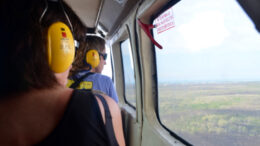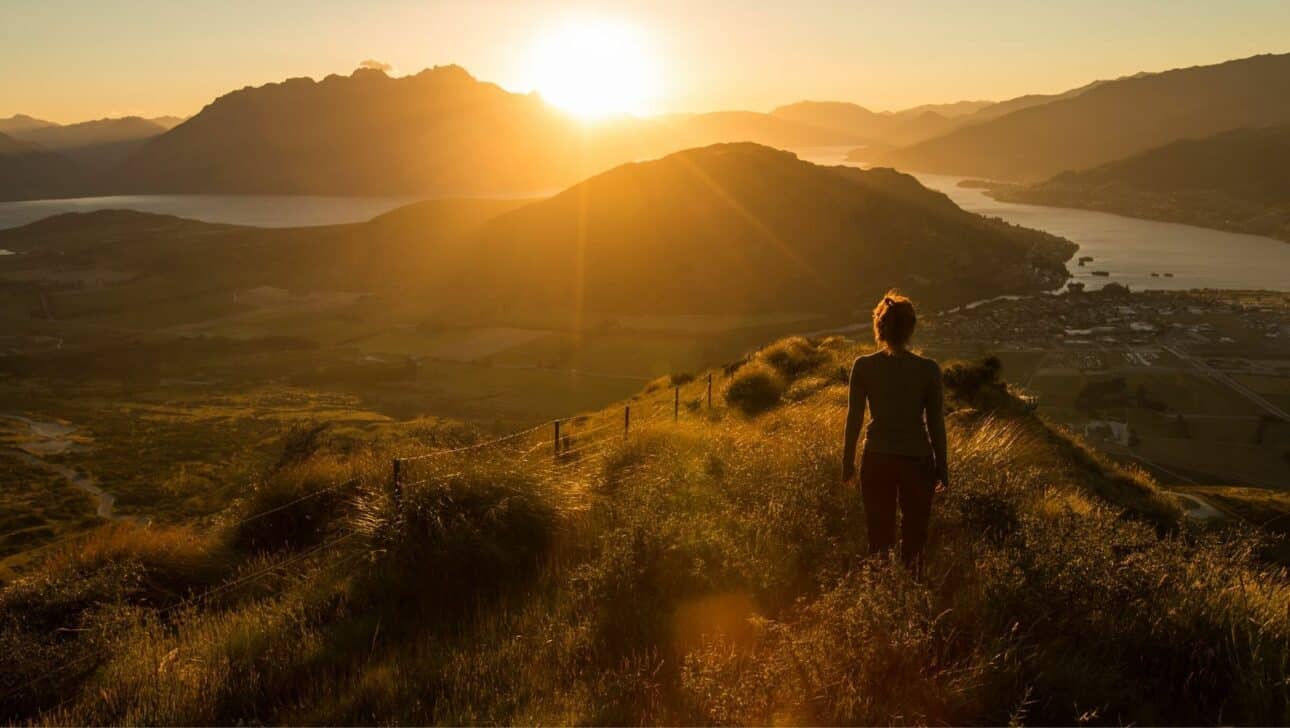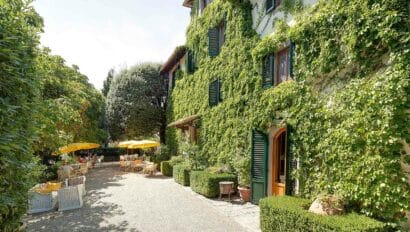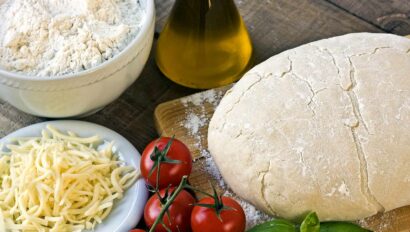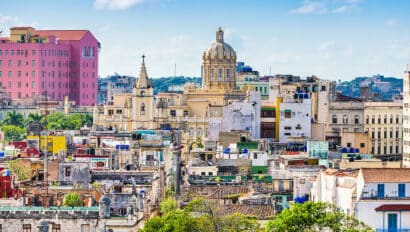Whether you call it the ‘Land of the Long White Cloud’ as the Maoris, or ‘Godzone’ as the kiwis, there’s no debate that year after year, New Zealand is one of the top 10 places in the world that people aspire to travel.
And for good reason. With the alternately volcanic and lush green North Island and the rugged, mountainous South Island, New Zealand offers you anything you can want to give your passport a workout.
For culture, you’ve got a rich Maori heritage, an acclaimed food and wine scene, and a myriad of Lord of the Rings filming locations. For nature, you’ll find craggy coastlines and beautiful beaches, geothermal spas, primeval forests, snowcapped mountains and impressive geysers. Kiwi birds, penguins, whales and seals abound. And the Maori have been here for 800 years and still retain their distinct and fascinating customs, now fused with colonial European and Asian cultures that create a vibrant urban life.
Make a Flat White
Starbucks caused international debate when they declared it an Australian invention, but Kiwis claim Wellington barista Fraser McInnes to be the true father of the Flat White.
This delicious type of coffee was born in Café Bodega on Willis Street in the summer of ’89, after a failed attempt to make a cappuccino. McInnes’ creation came out more ‘flat’ than ‘frothy’ and he apologetically served it to his customer, saying “sorry it’s a flat white.” The name stuck.
Sharper than a latte and silkier than a cappuccino, the Flat White is one third espresso, two thirds steamed milk. Here’s how to make it:
Ingredients:
Double espresso
3oz full fat milk
Tools:
Espresso maker
Milk steamer/frother
Your favorite coffee cup
Method:
Pre-warm your cup with hot water
Add a double shot of espresso
Steam milk to about 145 degrees Fahrenheit
Tap it on a countertop and swirl around to achieve signature smoothness
Slowly pour the milk over the double espresso, tilting the cup
Get creative with coffee art, or simply drink!
Coffee made, take a seat and join our armchair travels as we journey down under to one of the most incredible countries on earth.
Fun Facts
There are more sheep than humans. New Zealand’s first flock arrived in 1773 courtesy of Captain Cook and the national ratio was 6 to one on last count. Flock size has been shrinking considerably since the ‘Peak Sheep’ days of 1982, when the ratio was an incredible 22 to one—increasing population size and decreasing demand for lamb are believed to be the main culprits.
Only 5% of New Zealand’s population are humans. The rest is animals, forming the highest animal:human ratio in the world. This includes the aforementioned sheep, the emblematic kiwi birds and more penguin species than any other country. But not snakes—there are no snakes in New Zealand whatsoever!
Over 30% of New Zealand is covered in protected areas, including 13 national parks. Classic Journeys favorites from our North & South island tours include Aoraki Mount Cook National Park (for its skyscraping peaks and spectacularly starlit starry skies), and Mount Aspiring (hiking heaven with a hundred spectacular glaciers.)
Kiwi is the national bird of New Zealand. While it does have (tiny) wings, it cannot fly. Kiwi feathers are more like fur, and though it has no tail feathers, it does have whiskers, like a cat. And since this is the only bird in the world with nostrils at the end of its beak, its sense of smell is second to none. In honor of the bird, New Zealanders have been called ‘Kiwis’ since they were given the nickname by Australian soldiers in WWI. Pro tip: never leave your shoes or hiking boots outside, as kiwi birds love to eat the laces!
Kiwi fruit is not actually from New Zealand. A returning traveler brought seeds into the country after an expedition to the Far East in 1904. In 1959, because gooseberries weren’t the most popular fruit, produce company Turners and Groves re-christened the fruit. They named it ‘kiwi’ after New Zealand’s national bird which—like the fruit—is round, brown and fuzzy!
Rotomairewhenua, otherwise known as Blue Lake, is the world’s clearest lake. Found in New Zealand’s Southern Alps, it’s scientifically proven to be nature’s clearest natural body of water, with an astounding visibility of up to 80 meters. Famous for its vivid violet and blue hues, its spring-fed water is considered sacred by the local Māori tribe and human entry is forbidden.
On September 19, 1893, New Zealand became the first ever country to give women the right to vote in parliamentary elections.
Thanks to the slender nature of the islands, wherever you are in New Zealand, you are never more than 80 miles (or just over an hour’s drive) from the ocean.
New Zealand has the longest place name in any English-speaking country. Deep breath: Taumatawhakatangihangaoauauotameteaturipukakapikimaungah-oronukupokaiwhenuakitanatahu
There’s an official national wizard! In 1990, New Zealand’s Prime Minister, Mike Moor, wrote to the ‘Wizard of Christchurch’ suggesting he become the Wizard of New Zealand. The national Wizard’s duties include protecting the Government, blessing new enterprises, casting out evil spirits and cheering up the population.
Travel through the TV
Undoubtedly the most famous movies to come out of New Zealand are the Lord of The Rings movies, showcasing the nation’s spectacular scenery in over a hundred different locations. Watching all three (you can stream them on Amazon Prime) will take 11.2 hours in total, which is certainly one way to fill your free time during #stayathome! For an extended movie marathon, begin by watching The Hobbit trilogy, which was all filmed in New Zealand and will add another 8.5 hours of viewing time!
Available on Hulu, Mystery TV drama Top of the Lake is set in the fictitious New Zealand mountain town of ‘Laketop’ and was shot on location in Queenstown and Glenorchy.
Travel through reading
For children, whether read in person or through a videocall story time, Hairy Maclary from Donaldson’s Dairy is a New Zealand children’s classic.
For compelling adult reads, The Bone People by Maori Keri Hulme is an award-winning story of a part-Maori, part European artist living in a lonely tower on the New Zealand sea. The Luminaries by Eleanor Catton is a Man Booker Prize-winning ghost story, based in New Zealand’s 1866 gold rush.
New Zealand Department of Conservation YouTube
The New Zealand Department of Conservation has an amazing YouTube channel, where videos transport you into the striking surroundings of the nation’s Great Walks. They have a Meet the Locals series, which introduces you to native species, natural spaces and the people who protect them. There’s even a Royal Albatross Cam, which live-streams a Northern Royal Albatross nest at Taiaroa Head on the southeast tip of South Island.
Call friends and family with our Zoom Travel Backgrounds
Video conferencing tools such as Zoom and FaceTime have become an important part of social distancing life, letting us communicate with colleagues, catchup with friends and check in on family members.
To incorporate armchair travel into your video calls, we’ve developed some Zoom travel backgrounds of New Zealand!
Click here for instructions and you can soon be speaking to your sister from the Southern Alps or hosting a conference call on the banks of Lake Tekapo…
More in our Passport To The World series: USA National Parks, Morocco, Canada
